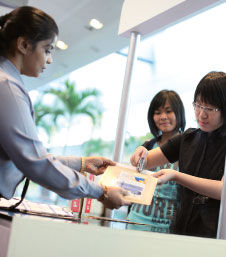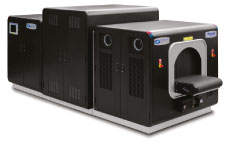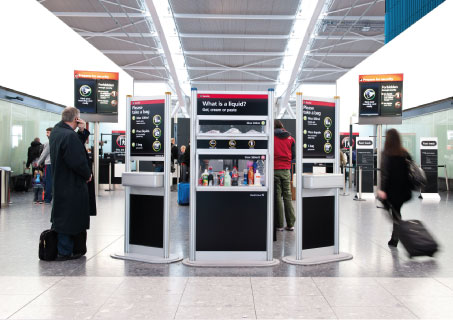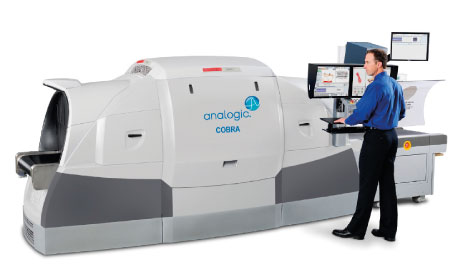
Tan explained that existing security threats and policies must be rationalised in order to prepare for significant changes to the airport security process in the future.
The security process has proved to be most difficult aspect of the airport experience to improve over the course of the last decade. With the restrictions on liquids, aerosols and gels (LAGs) still in place, privacy issues surrounding the use of full-body scanners, and the debate still ongoing concerning the proposed use of passenger profiling techniques, significantly changing the existing process has proved to be arduous.
“I think almost everybody these days agrees that the conventional ‘one-size-fits-all’ approach, which religiously applies the same security screening procedure to all passengers, is no longer suitable,” Bukallah said. “Passenger traffic will double in 20 years but, for sure, terminal buildings and security teams will not double in size. ACI, together with other industry partners, has been lobbying for a more sensible approach based on the philosophy of risk management. I am pleased that risk-based security has become a commonly accepted concept.”

Rapiscan’s RTT baggage screening solution has become the first ultra-high speed system to pass the European Civil Aviation Conference’s (ECAC) Standard 3 threat detection test.
Hold baggage threat detection
There have been a number of high profile cases involving acts of terrorism and serious threats to aviation security when banned substances and devices have been brought onto aircraft. In order to combat the increased danger of sophisticated emerging threats, the most innovative screening technologies must be developed and made available so that airport authorities can continue to ensure passenger safety.
Rapiscan Systems is a leading global supplier of security inspection systems. Its RTT (Real Time Tomography) baggage screening solution has become the first ultra-high speed system to pass the European Civil Aviation Conference’s (ECAC) Standard 3 threat detection test, the highest standard set by ECAC for the detection of baggage-borne explosive threats.
The RTT system is a revolutionary liquid explosive detection technology, with the detection capability of Computerised Tomography (CT) and is capable of screening baggage at speeds of up to 1,800 bags an hour. Furthermore the RTT system’s resolution and reconstruction process not only delivers optimal performance for the detection of prohibited materials, but it also generates fewer false alarms whilst simultaneously lowering the airport’s operational costs. RTT can also detect density levels in liquids, alerting the operator to potentially concealed explosives that will enable airports to keep ahead of the threat of terrorism.
This RTT system is the only baggage screening system in the market to combine this high throughput rate with meeting ECAC Standard 3 threat detection.
This risk-based approach is central to a number of different initiatives, including ACI EUROPE & AEA’s Better Security project, the US Transportation Security Administration (TSA)’s Pre-Check programme and IATA’s Checkpoint of the Future. Under these concepts, low-risk passengers would enjoy expedited processing, while those deemed high-risk would face a more stringent security process.
Changi Airport Group’s Tan said: “These concepts have thrown up some interesting ideas for the industry to deliberate. The idea of differentiating passengers and implementing appropriate screening measures is very bold in its objective. I don’t believe that the industry is ready to move into the area of passenger differentiation currently as there are obvious challenges, ranging from the availability of passenger information to conduct proper risk assessments, and issues pertaining to discrimination.”
Before any real advancements can be made, Tan explained that three key areas need to be addressed: security threats and policies must be rationalised; active testing and deployment of technology to improve security and facilitation must take place; and self-service initiatives, including the use of biometrics, must be more widely embraced.
While all of these issues are being considered and solutions are being developed, Bukallah stated that in the meantime, initiatives such as the Transportation Security Administration’s (TSA) Risk Based Security initiative and PreCheck programme can make “incremental improvements to today’s screening process”.

Bukallah: “Liquid explosives is one of the range of threats that the screening process needs to counter.”
Lifting LAGs restrictions
It is not just passenger screening that needs to be addressed to create an enhanced airport security product for the airport of 2020. “Liquid explosives is one of the range of threats that the screening process needs to counter,” Bukallah stated.
However, following the European Commission’s announcement in July of the decision to again postpone the proposed lifting of restrictions on LAGs – which had been scheduled for April 2013 – the current screening process looks set to remain in place for the time being. “There is a risk that the lifting of the restrictions on LAGs, if not properly coordinated amongst airports and communicated well in advance to passengers and all parties involved, would create confusion and chaos at checkpoints, and passenger complaints,” Bukallah stated.

The COBRA checkpoint CT system offers 3-D imaging, higher throughput, lower false alarm rates and superior automatic detection.
Analogic’s innovative checkpoint solutions
Analogic Corporation provides leading-edge healthcare and security technology solutions to advance the practice of medicine and save lives. It provides innovative checkpoint and checked baggage solutions to airports worldwide and its CT technology meets the highest TSA (Transportation Security Administration) and ECAC (European Civil Aviation Conference) standards for automatic threat detection. Over the past 15 years, Analogic has deployed more than 1,100 CT-based explosives detection systems to more than 30 countries. The company’s first explosive detection system (EDS) was installed in Rome, Italy in 1998 and Analogic markets and distributes the premium checkpoint CT systems, the COBRA and COBRA DualUse, directly to airport and government customers.
The COBRA checkpoint CT system offers 3-D imaging, higher throughput, lower false alarm rates and superior automatic detection compared to current checkpoint X-ray systems. In 2012, the COBRA received ECAC Type D/ D+ approval (liquids and laptops can stay in carry-on baggage). The COBRA’s superior performance enables airports to use fewer checkpoint lanes, reduce staffing and acquisition costs, and improve the passenger experience.
The Cobra DualUse EDS is designed for small and medium size airports that wish to leverage a single system to screen both carry-on and checked luggage. The DualUse functionality enables operators to toggle between carry-on and checked baggage modes in seconds. This unique operational benefit reduces staffing, maintenance, installation and equipment acquisition costs. The DualUse system is TSA-certified for checked baggage screening.
In order to get to a point where the screening process can be significantly enhanced, as highlighted by both Bukallah and Tan, it is vitally important that the industry – including airlines, airports and suppliers – works closely together to establish the best way forward.
“The need for collaboration cannot be overstated,” Tan explained. “Cost, funding and operational considerations have sometimes hampered the adoption of new security procedures and technology, which can improve facilitation and security. Stakeholders must come together to rationalise such developments for the future.” Although there is still much work to be done to develop and implement an airport security process that fits the criteria of providing an enhanced passenger experience while also retaining the highest levels of security, with all key players working towards the same goal, there is no reason to suggest that it will not be a part of the airport after 2020.







